During the New York Islanders’ recent loss to the Philadelphia Flyers, I shouted – and tweeted – “shoot the puck” dozens of times. Normally, I lament the fact that fans yell “shoot” when players appear to be in a good shooting position. As a former player and coach, I understand there’s a different view from the ice that’s not available from the stands or the couch.
Players also have a good idea of when they should shoot, just listen to Andrew Ference in this video. With that said, too often Islanders players are looking to pass first and, when they do get a shot to towards the net, it’s often from the same couple of spots on the ice. I broke down the issues into two sections: generating chances and predictability.
Generating Scoring Chances
During a recent edition of the Steve Dangle Podcast, Rachel Doerrie mentioned a lot important hockey tidbits. One in particular wasn’t anything groundbreaking, but it was a basic, even fundamental, aspect of the game the Islanders have gotten away from this season. On the show, Steve Glynn asked Doerrie about the Carolina Hurricanes “gaming Corsi,” to which she had the following response:
With that in mind, it’s worth diving into some numbers. So far this season, the Islanders are 30th out of 31 teams in shots on goal with 1,936. To compare, most teams in playoff position have well over 2,000. Additionally, the Islanders only have one player in the top-100 in shots on goal – Anders Lee with 176, which ranks 66th in the league.
While the Islanders have a great team shooting percentage (10 percent), many of their players are clearly overachieving. Just take a look at a player like Valtteri Filppula, currently shooting 22.1 percent. The last time he had a shooting percentage around 20, the 2013-14 season with the Tampa Bay Lighting, he had 131 shots on goal and netted 25 goals for a 19.1 percent success rate. While that’s still high, for perspective, this season he has 15 goals on 68 shots and will likely not break the 100-shot plateau.
Not only is he overachieving, it’s unsustainable and, frankly, it’s the type of production that should be coming from the Islanders top-six, not its bottom-six. Unfortunately, Filppula and fellow bottom-six center, Casey Cizikas, who is also shooting at over 20 percent this season, have been the hottest Islanders scorers of late.
Going back to Doerrie’s point, she explains that a lot of coaches, including her example of New Jersey Devils coach John Hynes, tell players to simply get pucks to the net. For some reason, the Islanders just aren’t doing that, and it’s a problem throughout their lineup, though it’s more obvious for some players than others.
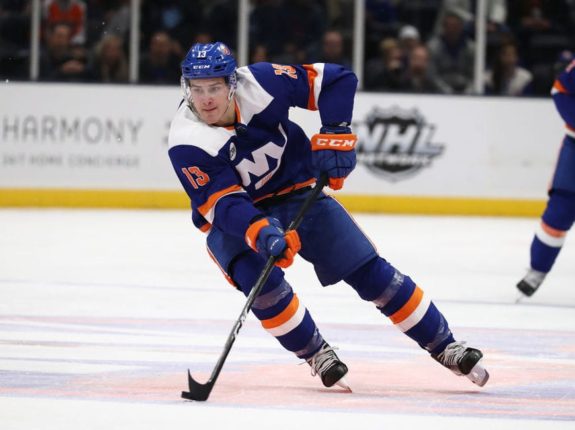
This brings us to Mathew Barzal. The speed at which he plays the game is almost unfathomable. His vision is phenomenal and his ability to fend off players while carrying the puck is nearly second to none. The issue with his game, which I hear from Butch Goring nearly every broadcast, is, “he’s gotta shoot the doggone puck.”
All too frequently Barzal comes flying around the opposing team’s net along the the left wing wall, cuts around the top of the circle and either passes or tries to get closer to the net, often losing the puck as defenders collapse down low or his pass is cut off looking for the back door tap-in. Barzal doesn’t always need to shoot to score. It could be just as beneficial to shoot for a rebound, drive the net and hope one of your linemates is in position to generate more chances.
While the philosophy of “quality over quantity” may have worked for coach Barry Trotz in the past, it doesn’t appear to be a long-term solution on Long Island.
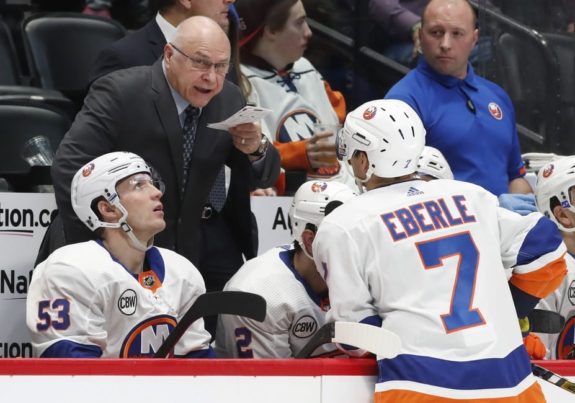
Shot Predictability
During the team’s recent 4-5-1 stretch, the shots the Islanders do take have been too predictable, particularly on the power play. They have a few defenders who have great shots, like Johnny Boychuk (149 shots) and Ryan Pulock (144 shots), both of which should be utilized, but are taking a lot of the team’s shots at even strength and on the advantage. Currently, both players rank in the top-five in shots on goal for the Islanders, second and fifth, respectively. To be a bit more clear, Boychuk is actually tied with Barzal for second on the team, which should also tell you something.
Despite the possession time the Islanders tend to have, shots are not only coming from the same players, they’re coming from the same places on the ice game after game. The map below shows where the Islanders are taking their shots from at even strength this season. This is also important because at this point in the season, chances are other teams have caught on to your offensive structure, which doesn’t bode well for you down the stretch or during the playoffs.
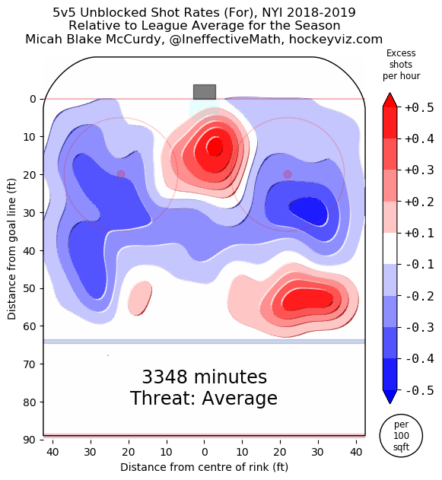
Their power play doesn’t look much different. Nick Leddy takes the majority of the shots from the top of the umbrella with Lee in front with a screen. Brock Nelson is normally positioned at the right faceoff dot, accounting for the third-most consistent shot area on the man advantage. What’s interesting about this is that it should be fairly obvious to the Islanders coaching staff that this isn’t working considering they’re operating at 15.4 percent this season while up a man.
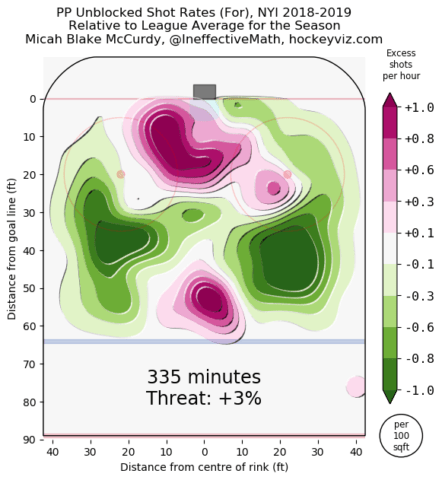
The only time the Islanders deviate from this approach appears to be when they’re down more than one goal. In other words, as players get more desperate, they tend to simplify the game and get pucks to the net.
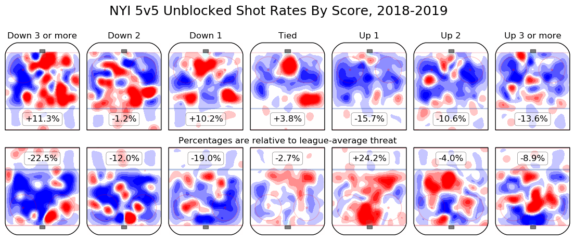
The Islanders have a really bright future, and while they may not have all the pieces to be a serious contender this season, it would behoove them to end the season strong. Anything can happen in the playoffs, so throwing more pucks to the net in all situations could help the team position themselves better moving forward.